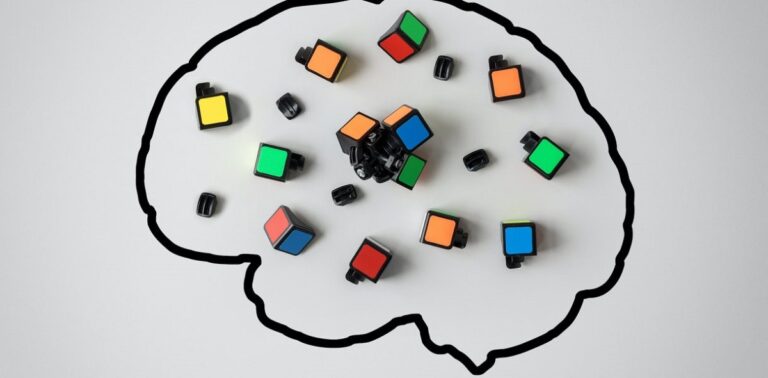In recent decades, the field of neuroscience has experienced a seismic shift, fundamentally reshaping our understanding of the brain and how it functions. These groundbreaking discoveries are challenging long-held beliefs and paving new pathways not only for diagnosing but also for treating neurological and psychiatric disorders.
Brain Plasticity: An Unseen Adaptability
For years, it was assumed that the mature brain was static, with unchangeable neural connections. However, this notion has been turned on its head by the discovery of brain plasticity. This term refers to the brain’s ability to change in response to external or internal stimuli.
Types of Plasticity
- Synaptic Plasticity: This involves the strengthening or weakening of synapses—the contact points between neurons—based on neural activity. This form of plasticity is essential for learning and memory.
- Structural Plasticity: The brain can also alter its structure to adapt to new situations, such as compensating for a lost sense or recovering from an injury, by creating, modifying, or removing neural connections.
- Neurogenesis: Perhaps most surprisingly, it has been shown that adult brains can generate new neurons, a process known as neurogenesis. This finding has exciting implications for treating neurodegenerative diseases like Alzheimer’s.
The concept of brain plasticity has radically changed our view of the brain’s potential to evolve throughout our lives, offering new hopes for rehabilitation and treatment of neurological disorders.
Connectomics: Mapping the Brain’s Networks
The understanding of brain mechanisms has significantly advanced with the emergence of connectomics, a field dedicated to mapping the neural connections within an organism. This discipline utilizes advanced brain imaging techniques such as diffusion MRI and electron microscopy to visualize neural networks with unprecedented clarity.
Insights from Connectomics
- Functional Connectivity: This concept has revealed that brain regions do not operate independently; instead, they are deeply interconnected.
- Large-Scale Networks: The brain is composed of large-scale networks that encompass distant brain regions involved in complex cognitive functions like memory, attention, and decision-making.
- Network Flexibility: It has been found that these networks are flexible, adapting their connections based on needs and environmental factors.
By unveiling the complexity and dynamics of brain networks, connectomics has enhanced our understanding of neurological and psychiatric disorders, such as autism, schizophrenia, and depression, which are now seen as dysfunctions within these networks. This perspective opens the door to targeted therapeutic strategies that specifically address the affected networks.
The Neural Basis of Consciousness: Insights into the Mind’s Mystery
Long considered beyond the reach of science, the mystery of consciousness is now being unraveled thanks to neuroscience. Research into the neural correlates of consciousness, particularly through studying altered states such as sleep, general anesthesia, or near-death experiences, has provided valuable insights.
Key Findings
- Critical Brain Structures: The brainstem and thalamus play crucial roles in regulating consciousness by modulating cortical activity.
- Consciousness Networks: Certain fronto-parietal regions, involved in perception, attention, and working memory, are critical for consciousness.
- Integration of Neural Activity: Theories suggest that consciousness requires high connectivity and coordination among various brain regions.
These discoveries have led to theoretical models of consciousness, like the integrated information theory and the global workspace theory, attempting to explain the underlying neural mechanisms of subjective experience.
Epigenetics and Memory Mechanisms: A New Era in Understanding Learning
The field of memory and learning has been revolutionized by the discovery of epigenetic mechanisms—chemical modifications to DNA that influence gene expression without altering the DNA sequence itself.
Epigenetic Processes in Memory
- Epigenetic Marks: Such as DNA methylation and histone modification, regulate the expression of genes involved in synaptic plasticity and neurogenesis.
- Epigenetic Memory: It is now understood that experiences can leave lasting marks on the genome, affecting brain function over the long term.
- Intergenerational Memory: Research has shown that experiences of parents, like stress or exposure to toxins, can influence the mental health and behavior of their offspring.
By shedding light on these epigenetic mechanisms, research has opened new avenues for innovative therapeutic approaches to memory-related disorders, such as Alzheimer’s disease, and conditions linked to traumatic memories, like post-traumatic stress disorder.
The latest discoveries in neuroscience have profoundly transformed our understanding of the brain’s operation, challenging many old beliefs and heralding new opportunities for medical and societal advancements. The fields of brain plasticity, connectomics, the neural basis of consciousness, and epigenetics are revolutionizing our view of the brain, promising further developments to enhance our knowledge of brain mechanisms and the treatment of neurological and psychiatric disorders. These advances mark a true revolution in our approach to understanding this fascinating and mysterious organ.






